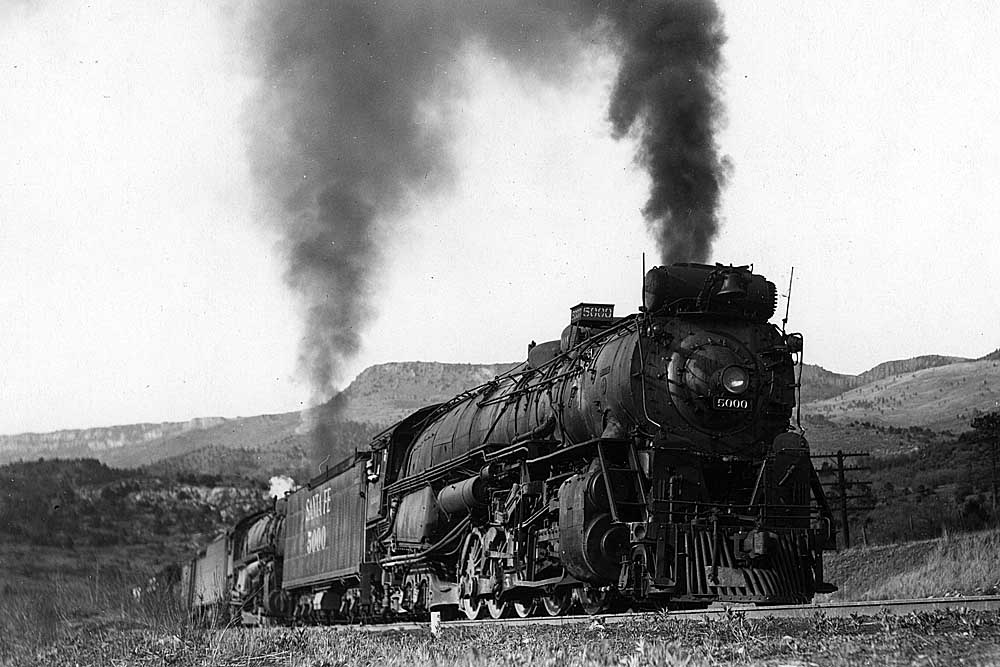
Family road trips usually involve self-inflicted detours to see park steam engines, “stuffed and mounted” for the sake of local posterity. They’re usually easy to find, thanks to J. David Conrad’s standard reference “Steam Locomotive Directory of North America, Vols. I and II,” which I’ve consulted for decades, or, in a pinch, Google. A satellite view helps. Just get close to the correct location and look for the long, black blob.
It can be a forlorn experience, such as a not-long-ago visit to Gary, Ind., to see Elgin, Joliet & Eastern 2-8-2 No. 765, rusting away, unprotected, in a park near City Hall (more on the 765 below). It can also be reassuring: For years I’ve been driving through the Upper Peninsula on U.S. 2 past Soo Line 4-6-2 No. 730 in Gladstone, Mich., and the engine always looks good, protected by a chain-link fence and a generous roof, its classic yellow headlight beckoning to the west.
Somewhere between these two extremes is Santa Fe 2-10-4 No. 5000, the famous “Madame Queen,” a bellwether of an engine if there ever was one. Alison and I were on a long-planned trip recently, following old Route 66 all the way from Chicago to Santa Monica, across the Texas Panhandle, and I knew wanted to stop in Amarillo.
There it was, tucked away on the northern edge of downtown on Second Avenue, looking neglected despite a tall chain-link fence topped with barbed wire. Oriented basically east-west, the engine’s south side is fading from black to gray thanks to constant sun exposure; the north side is a lot closer to black, but with plenty of rust.
A reasonably informative historic plaque explains that Baldwin delivered the 2-10-4 to the railroad in December 1930, that Santa Fe retired the engine in 1953, and that the city of Amarillo accepted it as a donation in 1957. It noted the origin of the Madame Queen nickname: a character from the old “Amos ’n Andy” radio show, apparently popular with Santa Fe shop forces.
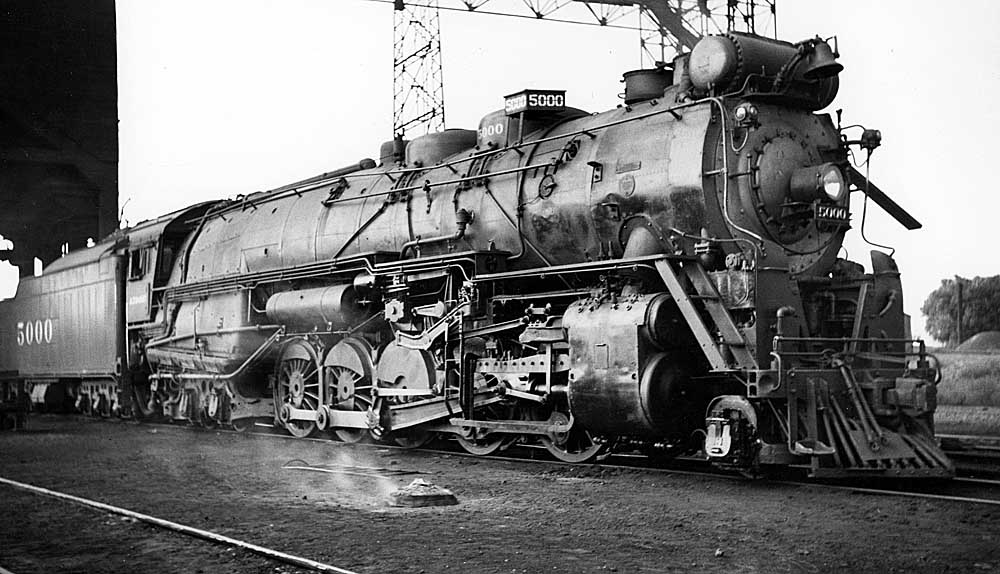
The plaque only hinted at No. 5000’s greatness. What it didn’t explain was how it grew out of Santa Fe’s need for a powerful successor to its big fleet of 2-10-2s; or how AT&SF mechanical department guru John Purcell was inspired to go the 2-10-4 route after witnessing the performance of one of Chesapeake & Ohio’s exemplary T-1 machines; or how, just a few years after its construction, the 5000 would lead to the greatest fleet of 10-coupled engines ever built, the 10 locomotives of Santa Fe’s 5001 class of 1938 and the 26 of the 5011 class of 1944.
Although those later classes have been widely lauded — including an issue-length tribute by historian Lloyd Stagner in the August 1975 issue of Trains — that lone 2-10-4 of 1930 made its own history. The 5000 featured a boiler pressure of 300 psi, the largest yet in a conventional steam locomotive, and was consequently matched with a one-piece frame to cope with the extraordinary power of a huge boiler delivering both speed and power to 69-inch driving wheels. In its first years, the Madame Queen regularly pushed the standard interval for overhauls from 125,000 miles to 150,000.
So, with a performance like that, why the eight-year gap before the 5001 engines began arriving? It wasn’t a lack of enthusiasm for the 2-10-4; AT&SF was eager to buy more. But the early years of the Depression hit Santa Fe hard, with the double whammy of national business conditions and a long drought that suppressed the railroad’s agricultural traffic, a mainstay in its territory. Spending on new engines would have to wait.
Alone as it was on the roster, the Madame Queen had a creditable career, hauling freight across the Southwest, mostly between Clovis and Vaughn, N.M., although it almost certainly ran through Amarillo from time to time. Along the way the engine was converted in 1940 from coal fuel to oil.
The Santa Fe saved a number of steam locomotives, including the 5000, and on April 17, 1957, the railroad placed it on display at the Amarillo passenger station. Railroad and local officials likely made a big deal of it at the time, given the city’s historic attachment to the railroad. Not for nothing has Santa Fe’s beautiful Gothic Revival division headquarters been preserved downtown on Polk Street, its red neon “Santa Fe” sign still glowing from 14 stories up.
But at some point, the depot location was apparently no longer tenable, and the 5000 was moved to its current location a few blocks away. In fact, from what I gather from various sources, the city clearly has had little interest in the engine’s fate. That happens so often with park engines: the local politicians and railroad officials have big smiles on their faces at late-1950s dedications, then 60 years later they’re asking “how’d we get stuck with this?!”
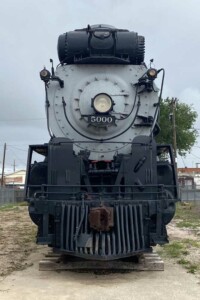
After several years of various machinations — familiar to any railroad preservationist who’s had to deal with unruly volunteers and clueless local officials — it appears the Madame Queen has found a new home.
A new group, Amarillo Depot, not to be confused with the Amarillo Railroad Museum, is actively involved in plans to move the engine back to the Santa Fe depot grounds for display and, one might assume, with enough contextual support so visitors can see why Madame Queen ought to matter to local citizens.
The group’s projections for the gorgeous city-owned 1910 Mission Revival depot are exciting, ranging from dining options in the old Fred Harvey space to an events venue in an adjacent Railway Express Building to a museum space covering the Santa Fe in particular and Panhandle railroading in general. Looking at the group’s website, you have to be excited about the prospects — especially if they involve the Madame Queen.
Let’s hope Amarillo city officials are open to the possibilities. The station deserves the attention it appears to be getting. And how much more impressive the whole project will be if it can be the new home of the locomotive that conquered Santa Fe’s Plains Division way back in 1930.
Postscript: Earlier I mentioned EJ&E 2-8-2 No. 765, the subject of my Oct. 16, 2020, Mileposts blog. There’s good news about this old workhorse. A local preservation organization with the cool name Decay Devils has overseen the cosmetic restoration of the 2-8-2, which not only has received a fresh coat of paint but also considerable rust removal. The engine is a long way from being restored to museum quality, but what a great first step!






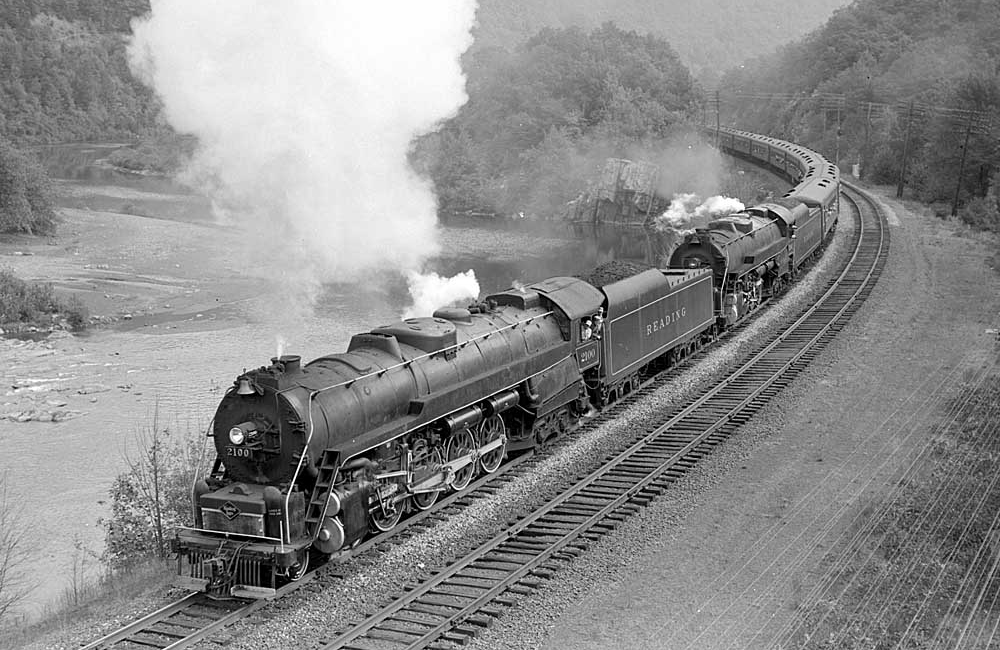
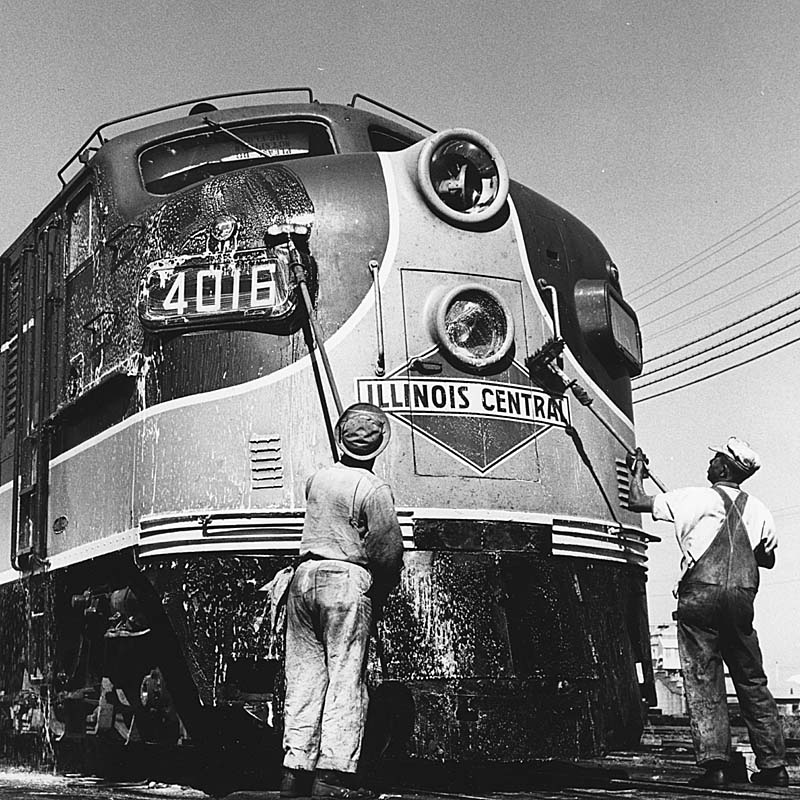
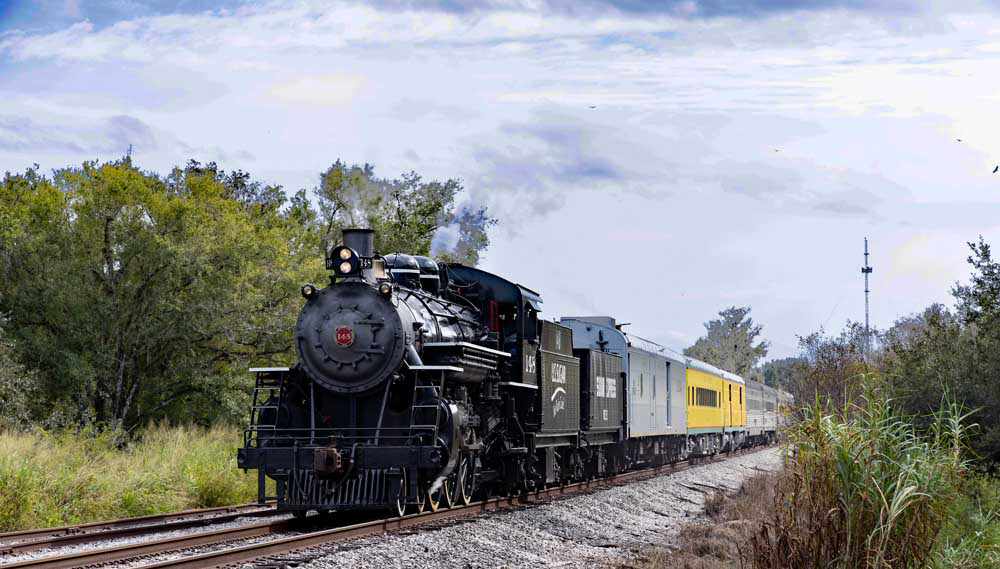
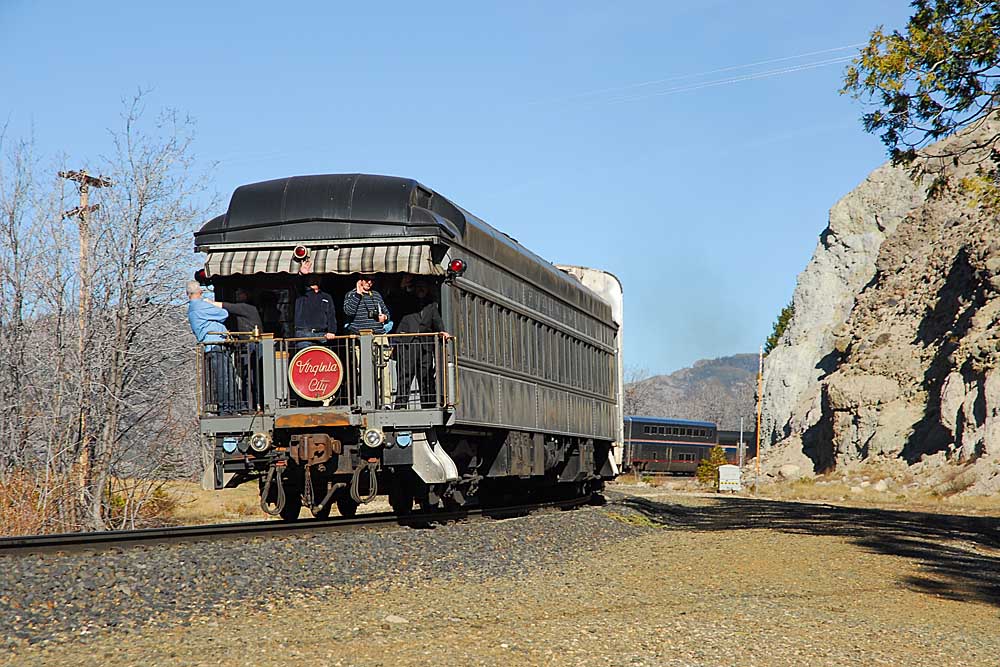




Hopefully they can get it under some cover and take the surface rust problem off. I was discouraging to be there on a rainy day and see all the little bodies of water collecting and getting under the paint.
Too bad you missed the opportunity to bring up the 3829. The very first 2-10-4 made back in 1919 I believe. While experimental like the 5000, it also allowed testing and sorting out the good ideas from the ok ones.